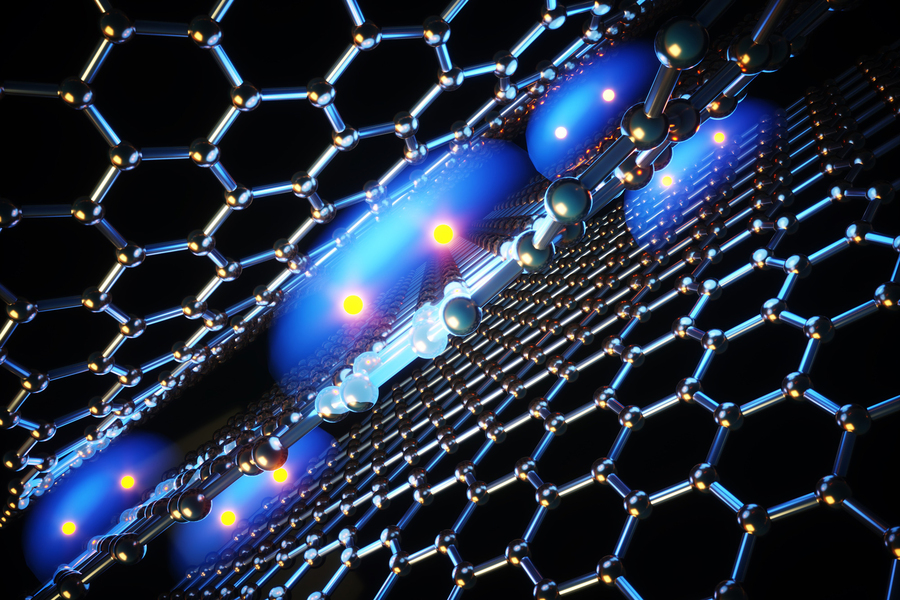Twisted graphene superconductors represent a revolutionary leap in the realm of superconductivity, potentially transforming how we harness electrical energy. These fascinating materials, formed from stacked graphene sheets that are rotated at precise angles, exhibit unique superconducting properties that could lead to significant advancements in lossless power transmission and quantum computing. Researchers have been captivated by the behavior of superconducting electrons in these twisted structures, as they reveal new pathways for energy-efficient detectors and technologies. The potential applications of twisted graphene extend far beyond conventional superconductors, hinting at a future where electricity can be transmitted without any resistance, paving the way for innovations like levitating trains. As the exploration of graphene superconductivity continues, the implications for science and technology are bound to reshape our world.
The exploration of twisted graphene materials presents an exciting frontier in the field of electronic advancements. This phenomenon involves the intricate arrangement of graphene layers that, when aligned at specific angles, fosters superconductivity, allowing currents to flow without resistance. Such developments in these remarkable carbon-based materials open avenues for enhancing energy transmission methods and the design of sophisticated quantum computing systems. Furthermore, the promise of superconducting electrons in twisted graphene raises the possibility of constructing ultra-sensitive detectors that operate with remarkable efficiency in various applications, including astronomical observations. With ongoing research in twisted graphene, scientists are uncovering groundbreaking ways to revolutionize technology and energy management.
Understanding the Basics of Superconductivity
Superconductivity is a phenomenon where a material can conduct electricity without resistance, arising under specific conditions, notably at very low temperatures. This property suggests that energy can be transmitted without loss, making superconductors vital for various advanced technologies. The roots of superconductivity date back to the discovery of solid mercury by Heike Kamerlingh Onnes, who first observed this remarkable behavior over a century ago. Since then, researchers have dedicated themselves to understanding how materials achieve this state and how it can be harnessed for practical applications.
Fundamentally, superconductivity involves the pairing of electrons into Cooper pairs, which move through the lattice of the superconductor without scattering, thus avoiding energy loss. The ideal conditions for superconductivity include achieving extremely low temperatures, which affect the lattice vibrations or phonons that can disrupt these pairs. Researchers have focused on various materials, from conventional superconductors like aluminum to more exotic compounds, with the goal of finding materials that exhibit superconductivity at higher temperatures.
Frequently Asked Questions
What are twisted graphene superconductors and why are they important?
Twisted graphene superconductors refer to the unique behavior observed in stacks of graphene layers that are slightly rotated relative to each other. These materials have garnered attention because they exhibit superconducting properties that could revolutionize technology by enabling lossless power transmission, enhancing quantum computing capabilities, and leading to the development of energy-efficient detectors.
How do twisted graphene superconductors enhance superconducting electron behavior?
Twisted graphene superconductors allow for an unusual interaction among superconducting electrons, creating a strong ‘glue’ that promotes electron pairing at low temperatures. This pairing leads to a superfluid state where electrons can flow without energy loss, distinguishing them from conventional superconductors like aluminum.
What role do twisted graphene superconductors play in quantum computing?
Twisted graphene superconductors are essential in quantum computing as they offer unique superconducting properties that may improve qubit performance and coherence. Their ability to maintain superconducting states at higher temperatures compared to traditional materials could facilitate more robust quantum computing systems.
How can twisted graphene superconductors contribute to lossless power transmission?
Twisted graphene superconductors are capable of transmitting electricity without resistance, which is critical for lossless power transmission. This property could make electrical systems more efficient, reducing energy loss in power lines and allowing for more sustainable energy distribution.
What advancements in energy-efficient detectors are possible with twisted graphene superconductors?
Twisted graphene superconductors have the potential to enhance energy-efficient detectors, particularly for space exploration. Their unique superconducting properties facilitate the development of highly sensitive, low-power detectors that can operate effectively in the near vacuum of space where minimal light is available.
What are the future implications of research on twisted graphene superconductors?
Research on twisted graphene superconductors could lead to significant technological advancements, including improved superconductors for various applications, breakthroughs in quantum computing, and innovative materials for energy-efficient devices. As scientists explore these properties further, the findings may also shed light on the fundamental physics of superconductivity.
| Key Points | ||||||
|---|---|---|---|---|---|---|
| Superconductivity in twisted graphene can enhance power transmission and quantum computing. | The phenomenon was first described in 1911 with solid mercury. | Recent research reveals superconducting behavior in twisted graphene layers. | Twisting graphene layers significantly alters their electronic properties. | Understanding electron pairing is crucial for superconductivity. | Innovative methods, like measuring resonant vibrations, are being explored. | Twisted graphene has potential applications in energy-efficient space detectors. |
| Researchers from Harvard, MIT, and Raytheon collaborated on the study. | Graphene was discovered in 2004, and its superconductivity was shown in 2018. | New insights into electron movement could impact other two-dimensional materials. | The project received funding from the U.S. Department of Energy and National Science Foundation. |
Summary
Twisted graphene superconductors represent a cutting-edge frontier in materials science, combining unique properties of graphene with the fascinating behavior of superconductivity. This research opens doors for transformative applications in energy efficiency and quantum technologies, offering exciting possibilities for future advancements.
